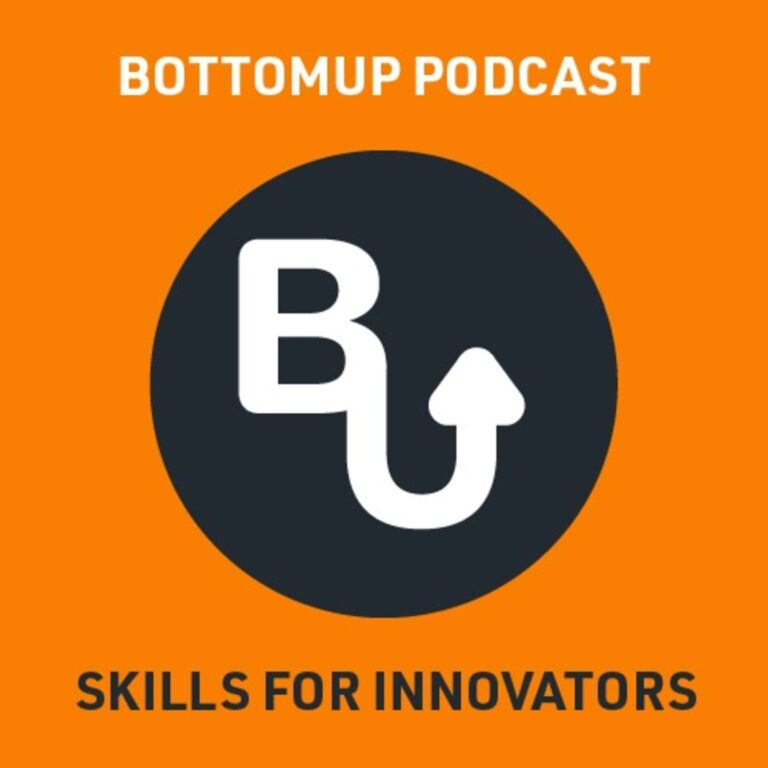Who is your product customer? In the previous episode we talked about Product Management: What’s the product idea? Now we’re going to ask ourselves who is the customer, the user of this product or service.
This question is so powerful, you should keep coming back to it time and time again.
The reason is the more that you understand and the more you empathize with your customer, the easier it will become to serve their needs. Frankly, if you’re solving a problem for them, then you’ve got a product that’s worth building.
Continuing our Product Management series, we’re tackling the biggest challenges you’re going to face as you build, create, develop, and manage your product.
And today we’re talking about who is the user of your product.
Who. What. Where. Why
Who is our product customer? What do they need now? When we talk about who the customer is, often a lot of people describe their customers or their prospective customers as a very simple demographic, for example: males, 18 to 24. And what else? They like gaming. Uh, huh, is that it? And that kind of tends to be it.
Maybe they can tell you what country they’re in but what we want to present to you is that you can go so much deeper.
How do they spend money? How do they purchase, how did they use products and services?
There are four key buckets that you should be filling in on your checklist for understanding who your user is. And if you do this well, you’re on the path to finding the clues to developing a great product.
First let’s get the basic foundational areas of understanding our customers, demographics, segmentation, geographic and behavioral and psychographic.
- Demographic and Segmentation:
- Who are they?
- Where are they? Geographic. Urban or Rural.
- Behavioural Segmentation and Psychographics:
- Attitudes
- Values
- Interests
- Lifestyle
- Personality traits
- and the really big one. What motivates them
Demographic segmentation looks at who and where they are and even the climate based on their geographic location and how it affects them.
Behavioural segmentation is what motivates them to spend money? How do they purchase, how did they use products and services? And even what brands they have an affinity for and what goals and frustrations do they have.
Want to learn more about who your product customer is, learn how to create customer personas and bring your data to life.
Join us at the BottomUp Skills Podcast for more bite sized product skills and at BottomUp Skills to learn Design Thinking, Agile, Lean and much more.
Free skill courses for product people and innovators.
TRANSCRIPT
Hello and welcome to the bottom up skills podcast. I’m Mike Parsons the CEO of Qualitance and we are flying through our product management series.
We’re tackling the biggest challenges that you’re going to face as you build, create, develop, and manage your product. And today we’re talking about who is the user of your product or who is your product customer.
Now in the previous show, we talked about what’s the idea. Now we’re going to really drill into things and ask ourselves who is the customer, the user of this product or service.
Who Is Your Product Customer?
I don’t want you to dismiss this and think, well, this is all pretty simple, straightforward stuff. Because it’s not, frankly, you can never over obsess about who is your customer.
This question is so powerful and you should keep coming back to it time and time again. And the reason is the more that you understand and the more you empathize with your customer, the easier it will become to serve their needs.
Frankly, if you’re solving a problem for them, then you’ve got a product that’s worth building.
So just keep on obsessing. Who’s our customer. What do they need now?
I want to say that the biggest thing that I noticed in people, when we talk about who’s the customer is how general they tend to be when describing their customer.
I will often find that a lot of people describe their customers or their prospective customers as just a very simple demographic description.
Males, 18 to 24. Okay. And what else? They like gaming. Ok is that it? And that kind of tends to be it.
Maybe they can tell me what country they’re in and what I want to present to you is in search of the answer to the question who is our customer.
You can go so much more deeper because frankly.
The Four Key Buckets – Demographics & Behavioural
There are four key buckets that you should be filling in. On your checklist for understanding who your user is and I’m going to take you through them. And if you do this well, I think in the two less discussed areas of customer profiling.
I think you’re going to find a lot of clues to developing a great product. But first let’s get the two basic foundational areas of understanding our customer really down.
The first one is demographics. Now you can talk about ageing, gender. Males 18 to 24, but let’s talk about their annual income, their education, uh, or ethnicity.
Let’s really kind of get into some more demographic profiling of them. Okay. So it’s not just age and gender, which tends to be where most people stop.
So that’s bucket number one, that’s demographic profiling.
Don’t Forget Location, Location, Location
Now the other part that is an essential one is the geography, now what’s really important here is that you can go beyond just saying they’re in the U.S or they’re in San Francisco.
You can get down to establishing. Is it an urban or rural setting or suburban setting?
You can look at what sort of climate affects them in that geography. You can even look at what you define as being the regional radius.
Are you looking at a town city, County state level? There’s all sorts of different permutations there.
The key thing here is for example, the insight of whether someone is rural urban can create a lot of contexts to the way in which they might use a product or a service.
So go deeper on demographic and geographic areas. But what we’re doing here is we’re trying to go deeper into the question. To find the answer to who is our customer and beyond the first two, which are sort of foundational ones.
Attitudes and Behaviours
There’s two other areas that you should explore and that’s their attitudes and their behaviours or so differently how they think and how they do.
We formally call this psychographic. And behavioural market segmentation. So let’s have a look at psychographics. This is attitudes, values, interests, lifestyle, personality traits, and really big one. What motivates them.
If you get into this, you get into a higher order of understanding who your product customer is and you can get to that big one that I mentioned.
Motivations
Motivations, because the more you understand what motivates them, the more you’ll be able to understand what happens in the other area. That I mentioned, which is behavioural.
Behavioural segmentation of your user is how do they spend money? How do they purchase, how did they use products and services? What do they think and do with brands now in these two areas.
There’s lots and lots of clues with behavioural segmentation.
Customer Habits
You can map how your customer behaves with a similar brand product or service, you can look at how they spend with them when they spend with them. What influences their habits.
Now that’s really, really good because if you want to introduce a new habit to your customer or use it, you’ve got to fight for their attention.
And you’ve got to work out how to create enough value that they’re going to stick with this new behaviour. So that can all come from this idea of behavioural segmentation.
How they spend, how they purchase, what sort of status they look to have, the various products and services. So behavioural segmentation.
So far we’ve got demographics, segmentation, geographic, and behavioural.
Psychographic
Then this last one, psychographic. This is great because inside of this, as a lot of clues to how they think, what informs their choices for new new products and services.
Or how they might use, your existing products or service and an insight of understanding their attitudes. You can really come to terms with all sorts of issues that you might be able to solve for the customer.
Whether you come in through that behavioural window or through their attitudes, there’s actually a lot to learn. So there’s so much in this customer or this user universe.
When you’re thinking about who is the user of our product, you’ve got their age and their gender and so much more in demographic. And you’ve got those other three segments; geographic, behavioural, and psychographic.
Now a great way to tell that story because you could run the risk. I’m getting a little overwhelmed with lots of data. What I would really recommend is to draw up some user personas.
User personas are just archetypes of who your classic users are.
You might have a couple of segments of customer and the key thing with these different segments is that you can express them as a user story.
User Personas
Now let’s talk about user personas. These are great ways of introducing the user.
Your segmentation in the form of a story, you can actually write a little bio. Describe their personality, how they live their life, what motivates them goals and frustrations and all of that good stuff.
You can even talk about what brands they have affinity for, what services, and these really just bring to life, the characteristics of your different segments.
So you might have a sort of advanced early adopter user versus like a late majority user. Two very different types of users of your service. And you can tell them their story through a user persona, and this will be very good.
At bringing to life that data, because you don’t want to get buried in all of that data.
Now, if you are interested in learning more about finding out who is your customer, you can get a ton of free master classes and courses over@bottomup.io.
And remember, we’ve got a great design thinking masterclass, which is totally free. So jump on over to Bottomup.io and you get to know your customer even better.
Well, that’s it for this episode of the bottom up skills podcast, that’s a wr


